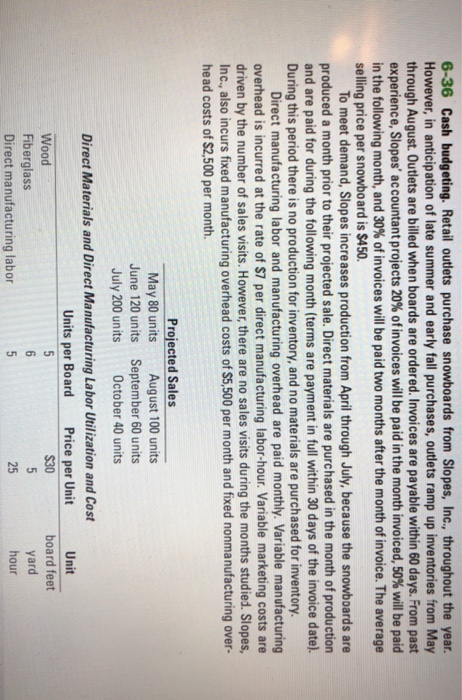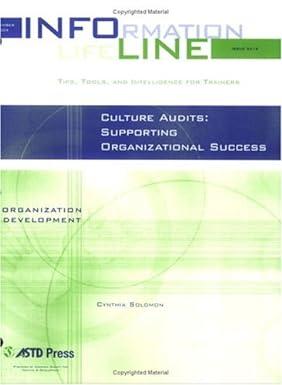6-36 Cash budgeting. Retail outlets purchase snowboards from Slopes, Inc., throughout the year. However, in anticipation of late summer and early fall purchases, outlets ramp up inventories from May through August. Outlets are billed when boards are ordered. Invoices are payable within 60 days. From past experience, Slopes' accountant projects 20% of invoices will be paid in the month invoiced, 50% will be paid in the following month, and 30% of invoices will be paid two months after the month of invoice. The average selling price per snowboard is $450. To meet demand, Slopes increases production from April through July, because the snowboards are produced a month prior to their projected sale. Direct materials are purchased in the month of production and are paid for during the following month (terms are payment in full within 30 days of the invoice date). During this period there is no production for inventory, and no materials are purchased for inventory. Direct manufacturing labor and manufacturing overhead are paid monthly. Variable manufacturing overhead is incurred at the rate of S7 per direct manufacturing labor-hour. Variable marketing costs are driven by the number of sales visits. However, there are no sales visits during the months studied. Slopes, Inc., also incurs fixed manufacturing overhead costs of $5,500 per month and fixed nonmanufacturing over- head costs of $2,500 per month Projected Sales May 80 units August 100 units June 120 units September 60 units July 200 units October 40 units Direct Materials and Direct Manufacturing Labor Utilization and Cost Units per Board Price per Unit Wood $30 Fiberglass Direct manufacturing labor Unit board feet yard hour Required The beginning cash balance for July 1, 2012, is $10,000. On October 1, 2011, Slopes had a cash crunch and borrowed $30,000 on a 6% one-year note with interest payable monthly. The note is due October 1, 2012. Using the information provided, you will need to determine whether Slopes will be in a position to pay off this short-term debt on October 1, 2012. 1. Prepare a cash budget for the months of July through September 2012. Show supporting schedules for the calculation of receivables and payables. 2. Will Slopes be in a position to pay off the $30,000 one-year note that is due on October 1, 2012? If not, what actions would you recommend to Slopes' management? 3. Suppose Slopes is interested in maintaining a minimum cash balance of $10,000. Will the company be able to maintain such a balance during all three months analyzed? If not, suggest a suitable cash man- agement strategy








